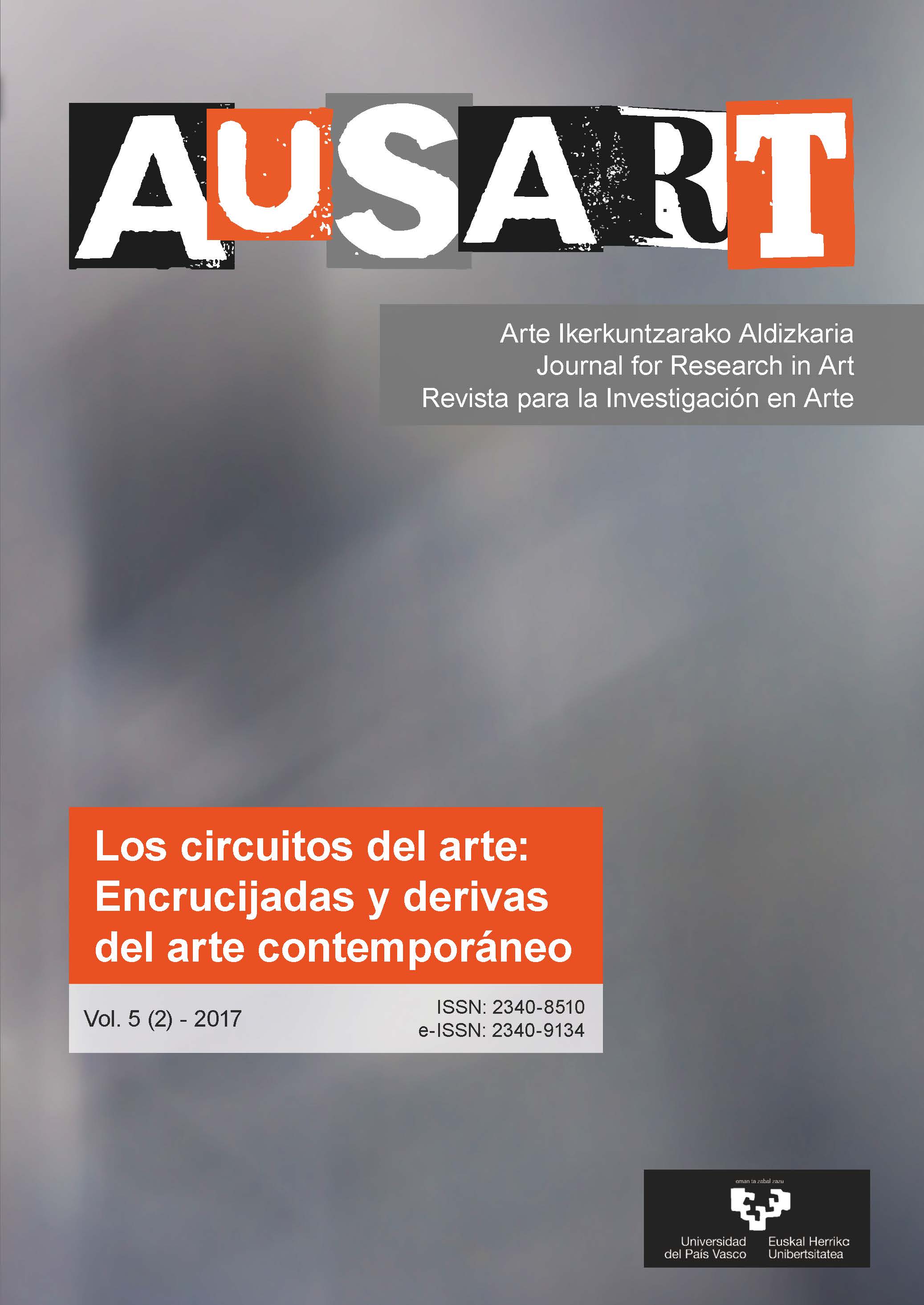Artistas contemporáneos en emergencia Estudio comparativo de Ertibil Bizkaia y Arteshop Bilbao
##plugins.themes.bootstrap3.article.main##
##plugins.themes.bootstrap3.article.sidebar##
Jabier Martínez López
Resumen
Ertibil Bizkaia y Arteshop Bilbao son dos convocatorias institucionales financiadas con fondos públicos, para la promoción de artistas emergentes en el contexto del País Vasco, con características tanto distintivas como similares. En este trabajo, examinamos las regulaciones en las que se basan el funcionamiento de estas convocatorias, para analizar la distribución de los presupuestos que ambos programas asignan a la compensación del trabajo de los artistas participantes, durante el período comprendido entre 2012 y 2016. También prestamos atención a los resultados de las licitaciones competitivas de los artistas en términos de concurrencia y participación. Los resultados confirman las principales características de la teoría de Thorsby sobre la preferencia de trabajo de los artistas (1994) y la teoría de Frank y Cook (1995) sobre los mercados donde el ganador se lleva todo.
Cómo citar
##plugins.themes.bootstrap3.article.details##
CONVOCATORIAS ARTÍSTICAS INSTITUCIONALES, ERTIBIL (CONVOCATORIA DIPUTACIÓN FORAL DE BIZKAIA), ARTESHOP (CONVOCATORIA COMERCIOS BILBAO), ECONOMÍA, FINANZAS PÚBLICAS
Frank, Robert H. & Philip J. Cook. 1995. The winner-take-all society. New York: Penguin
Florida, Richard L. 2002. The rise of the creative class, and how it is transforming work, leisure, community and everyday life. New York: Basic Books
Groys, Boris. 2002. «The artist as consumer». In Shopping: A century of art and consumer culture, edited by Christoph Grunenberg and Max Hollein. Ostfildern-Ruit: Hatje Cantz
Horkheimer, Max & Theodor W. Adorno. (1944) 1947. Dialektik der Aufklärung. Amsterdam: Querido
Landry, Charles & Franco Bianchini. 1995. The creative city. London: Demos
Landry, Charles. 2005. «Lineages of the creative city». In Creativity and the city: How the creative economy changes the city, edited by Simon Franke & Evert Verhagen. Rotterdam: Netherlands Architecture Institute
Plaza Inchausti, María Beatriz. 1999. «The Guggenheim-Bilbao Museum effect». International Journal of Urban and Regional Research 233: 589-592. https://doi.org/10.1111/1468-2427.00215
Plaza Inchausti, María Beatriz, Manuel Tironi & Silke N. Haarich. 2009. «Bilbao's art scene and the 'Guggenheim effect' revisited». European Planning Studies 17: 1711-1729. https://doi.org/10.1080/09654310903230806
Ramírez Domínguez, Juan Antonio. 2010. «El arte no es el capital: Arte y economía». In El sistema del arte en España, J.A. Ramírez, ed. Madrid: Cátedra
Rengers, Merijn. 2002. «Economic lives of artists: Studies into careers and the labour market in the cultural sector». Doctoral dissertation Utrecht University
Romo Guijarro, José Angel 1999. «El Museo Guggenheim, Bilbao y la identidad de los vascos». Thémata 23: 215-221
Rosen, Sherwin. 1996. «Book review: The winner-take-all society by Robert H. Frank & Philip J. Cook». Journal of Economic Literature 34: 133-136
Throsby, David. 1994. «A work-preference model of artist behavior». In Cultural economics and cultural policies, edited by Alan Peacock & Ilde Rizzo, 69-80. Dordrecht: Kluwer. https://doi.org/10.1007/978-94-011-1140-9_6
Yencken, David. 1988. «The creative city». Meanjin 47(4): 597-608
Zorloni, Alessia. 2013. The economics of contemporary art: Markets, strategies and stardom. Berlin: Springer. https://doi.org/10.1007/978-3-642-32405-5

Esta obra está bajo una licencia internacional Creative Commons Atribución-CompartirIgual 4.0.

Atribución-CompartirIgual 4.0 Internacional (CC BY-SA 4.0)
Usted es libre de:
- Compartir — copiar y redistribuir el material en cualquier medio o formato
- Adaptar — remezclar, transformar y construir a partir del material para cualquier propósito, incluso comercialmente.


 http://orcid.org/0000-0002-1141-3869
http://orcid.org/0000-0002-1141-3869